#python language course
Explore tagged Tumblr posts
Text

Are you looking to embark on a journey into the dynamic world of full-stack development with Python? Look no further! Gautham Digital Learning offers comprehensive Python full-stack training in Hyderabad.
BEST PYTHON TRINING IN HYDERABAD
#python course#python language tutorial#python language course#python programming#python full stack course#python training#reading
0 notes
Text
writes with python ”ugh I wanna write javascript” -> writes with javascript ”ugh I wanna write c++” -> writes with c++ ”I have made a horrible mistake”
#i’m trying to not start that one C++ course that haunts me#ever since I first signed uo for it last january but dropped it in february bc one (1) task took me a month#and by month I mean like I was at it basically everyday#and it has 100 of those#(it’s like leetcode things but with C++ (I’ve done 2 courses like that but with Python so thought I’d do it quick bc the only difference is#the language))#granted I had 0 knowledge of C++ before that so like hm#did sign up now for an entrylevel C++ course bc istg I’ll finish that course someday it’s in my mind constantly#(currently am writing with javascript and I’m getting bored)#(and I want that C++ course to start already but like it’s good it hasn’t yet bc got lots of other stuff as well)#codeblr#2024#february 2024
89 notes
·
View notes
Text
me: I have way too much going on, I need a break in which I don't have to think about anything
also me, immediately: for my class TEI exercise I shall choose to encode a page of House of Leaves
#and before you ask. yes of course it's one of Those pages#gotta be clear this was not necessary by any means I'm just insane#but like. I learn coding languages best by trying to see where the edges are lmfao#see also: the unhinged quiz game I turned in last year for my python class that was also NOT necessary#and I do want to use TEI for other things so like if I'm learning it I'm gonna fuckin learn it#this is fun for me for the record I'm not like torturing myself#megs vs mlis
11 notes
·
View notes
Text
My latest certificate from Udemy ...
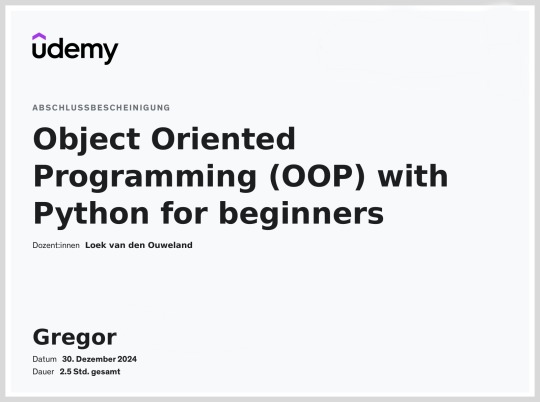
Post #156: Udemy, Loek van den Ouweland, Objekt Oriented Programming (OOP) with Python for beginners, 2025.
#programming#education#coding#learning#coding is fun#i love coding#i love python#i love programming#programming language#udemy online courses#udemy
6 notes
·
View notes
Text
What Are the Qualifications for a Data Scientist?
In today's data-driven world, the role of a data scientist has become one of the most coveted career paths. With businesses relying on data for decision-making, understanding customer behavior, and improving products, the demand for skilled professionals who can analyze, interpret, and extract value from data is at an all-time high. If you're wondering what qualifications are needed to become a successful data scientist, how DataCouncil can help you get there, and why a data science course in Pune is a great option, this blog has the answers.
The Key Qualifications for a Data Scientist
To succeed as a data scientist, a mix of technical skills, education, and hands-on experience is essential. Here are the core qualifications required:
1. Educational Background
A strong foundation in mathematics, statistics, or computer science is typically expected. Most data scientists hold at least a bachelor’s degree in one of these fields, with many pursuing higher education such as a master's or a Ph.D. A data science course in Pune with DataCouncil can bridge this gap, offering the academic and practical knowledge required for a strong start in the industry.
2. Proficiency in Programming Languages
Programming is at the heart of data science. You need to be comfortable with languages like Python, R, and SQL, which are widely used for data analysis, machine learning, and database management. A comprehensive data science course in Pune will teach these programming skills from scratch, ensuring you become proficient in coding for data science tasks.
3. Understanding of Machine Learning
Data scientists must have a solid grasp of machine learning techniques and algorithms such as regression, clustering, and decision trees. By enrolling in a DataCouncil course, you'll learn how to implement machine learning models to analyze data and make predictions, an essential qualification for landing a data science job.
4. Data Wrangling Skills
Raw data is often messy and unstructured, and a good data scientist needs to be adept at cleaning and processing data before it can be analyzed. DataCouncil's data science course in Pune includes practical training in tools like Pandas and Numpy for effective data wrangling, helping you develop a strong skill set in this critical area.
5. Statistical Knowledge
Statistical analysis forms the backbone of data science. Knowledge of probability, hypothesis testing, and statistical modeling allows data scientists to draw meaningful insights from data. A structured data science course in Pune offers the theoretical and practical aspects of statistics required to excel.
6. Communication and Data Visualization Skills
Being able to explain your findings in a clear and concise manner is crucial. Data scientists often need to communicate with non-technical stakeholders, making tools like Tableau, Power BI, and Matplotlib essential for creating insightful visualizations. DataCouncil’s data science course in Pune includes modules on data visualization, which can help you present data in a way that’s easy to understand.
7. Domain Knowledge
Apart from technical skills, understanding the industry you work in is a major asset. Whether it’s healthcare, finance, or e-commerce, knowing how data applies within your industry will set you apart from the competition. DataCouncil's data science course in Pune is designed to offer case studies from multiple industries, helping students gain domain-specific insights.
Why Choose DataCouncil for a Data Science Course in Pune?
If you're looking to build a successful career as a data scientist, enrolling in a data science course in Pune with DataCouncil can be your first step toward reaching your goals. Here’s why DataCouncil is the ideal choice:
Comprehensive Curriculum: The course covers everything from the basics of data science to advanced machine learning techniques.
Hands-On Projects: You'll work on real-world projects that mimic the challenges faced by data scientists in various industries.
Experienced Faculty: Learn from industry professionals who have years of experience in data science and analytics.
100% Placement Support: DataCouncil provides job assistance to help you land a data science job in Pune or anywhere else, making it a great investment in your future.
Flexible Learning Options: With both weekday and weekend batches, DataCouncil ensures that you can learn at your own pace without compromising your current commitments.
Conclusion
Becoming a data scientist requires a combination of technical expertise, analytical skills, and industry knowledge. By enrolling in a data science course in Pune with DataCouncil, you can gain all the qualifications you need to thrive in this exciting field. Whether you're a fresher looking to start your career or a professional wanting to upskill, this course will equip you with the knowledge, skills, and practical experience to succeed as a data scientist.
Explore DataCouncil’s offerings today and take the first step toward unlocking a rewarding career in data science! Looking for the best data science course in Pune? DataCouncil offers comprehensive data science classes in Pune, designed to equip you with the skills to excel in this booming field. Our data science course in Pune covers everything from data analysis to machine learning, with competitive data science course fees in Pune. We provide job-oriented programs, making us the best institute for data science in Pune with placement support. Explore online data science training in Pune and take your career to new heights!
#In today's data-driven world#the role of a data scientist has become one of the most coveted career paths. With businesses relying on data for decision-making#understanding customer behavior#and improving products#the demand for skilled professionals who can analyze#interpret#and extract value from data is at an all-time high. If you're wondering what qualifications are needed to become a successful data scientis#how DataCouncil can help you get there#and why a data science course in Pune is a great option#this blog has the answers.#The Key Qualifications for a Data Scientist#To succeed as a data scientist#a mix of technical skills#education#and hands-on experience is essential. Here are the core qualifications required:#1. Educational Background#A strong foundation in mathematics#statistics#or computer science is typically expected. Most data scientists hold at least a bachelor’s degree in one of these fields#with many pursuing higher education such as a master's or a Ph.D. A data science course in Pune with DataCouncil can bridge this gap#offering the academic and practical knowledge required for a strong start in the industry.#2. Proficiency in Programming Languages#Programming is at the heart of data science. You need to be comfortable with languages like Python#R#and SQL#which are widely used for data analysis#machine learning#and database management. A comprehensive data science course in Pune will teach these programming skills from scratch#ensuring you become proficient in coding for data science tasks.#3. Understanding of Machine Learning
3 notes
·
View notes
Text
Small Basic meets Python, #29 Map, Filter, Reduce ...
youtube
Post #241: YouTube, Socratica, Python Tutorial, #29 Map, Filter And Reduce Functions, 2024.
#programmieren#coding#programming#education#small basic#microsoft#coding for kids#basic for ever#i love small basic#basic programming#mohammad hamdy#mohammad hamdy ghanem#small visual basic#computer programming#programming languages#programmer#socratica#small basic meets python#python course#Youtube
5 notes
·
View notes
Text
Unlock the Power of Python Programming: A Complete Guide
Python programming has become one of the most sought-after skills in the world of technology. Its simplicity, flexibility, and vast ecosystem of libraries make it a top choice for both beginners and experienced developers. In this guide, we will explore various aspects of Python programming, from basic concepts to advanced applications like machine learning and web development.
Python Programming: A Beginner-Friendly Language
Python programming is renowned for its readability and straightforward syntax, making it ideal for beginners. Whether you are just starting to code or transitioning from another language, Python offers a smooth learning curve. Key Python programming concepts include variables, data types, and control structures, which are essential for writing functional code.
youtube
Python Data Structures: Organizing Data Efficiently
One of the core strengths of Python programming is its rich set of data structures. Lists, dictionaries, tuples, and sets help you store and manage data effectively. Understanding Python data structures allows you to create more efficient programs by organizing and manipulating data effortlessly.
Functions in Python Programming: Building Reusable Code
Functions are a fundamental part of Python programming. They allow you to break down complex problems into smaller, reusable chunks of code. Python functions not only promote code reusability but also make your programs more organized and easier to maintain.
Loops in Python Programming: Automating Repeated Tasks
Loops are an essential feature in Python programming, allowing you to perform repeated operations efficiently. With Python loops such as for and while, you can iterate over sequences or perform tasks until a specific condition is met. Mastering loops is a key part of becoming proficient in Python.
Object-Oriented Programming in Python: Structured Development
Python programming supports object-oriented programming (OOP), a paradigm that helps you build structured and scalable software. OOP in Python allows you to work with classes and objects, making it easier to model real-world scenarios and design complex systems in a manageable way.
Python Automation Scripts: Simplify Everyday Tasks
Python programming can be used to automate repetitive tasks, saving you time and effort. Python automation scripts can help with file management, web scraping, and even interacting with APIs. With Python libraries like os and shutil, automation becomes a breeze.
Python Web Development: Creating Dynamic Websites
Python programming is also a popular choice for web development. Frameworks like Django and Flask make it easy to build robust, scalable web applications. Whether you're developing a personal blog or an enterprise-level platform, Python web development empowers you to create dynamic and responsive websites.
APIs and Python Programming: Connecting Services
Python programming allows seamless integration with external services through APIs. Using libraries like requests, you can easily interact with third-party services, retrieve data, or send requests. This makes Python an excellent choice for building applications that rely on external data or services.
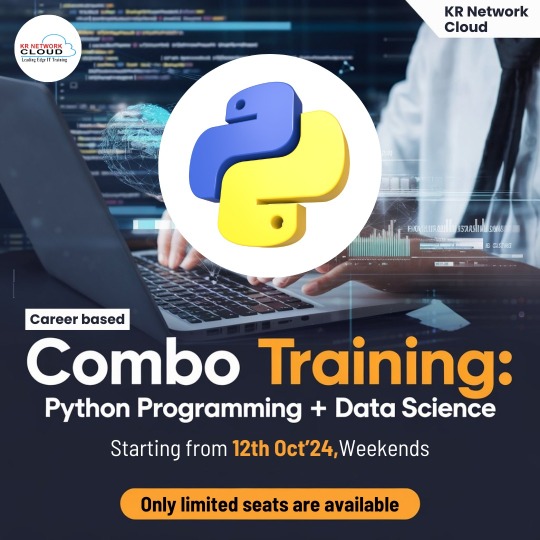
Error Handling in Python Programming: Writing Resilient Code
Python programming ensures that your code can handle unexpected issues using error handling mechanisms. With try-except blocks, you can manage errors gracefully and prevent your programs from crashing. Error handling is a critical aspect of writing robust and reliable Python code.
Python for Machine Learning: Leading the AI Revolution
Python programming plays a pivotal role in machine learning, thanks to powerful libraries like scikit-learn, TensorFlow, and PyTorch. With Python, you can build predictive models, analyze data, and develop intelligent systems. Machine learning with Python opens doors to exciting opportunities in artificial intelligence and data-driven decision-making.
Python Data Science: Turning Data Into Insights
Python programming is widely used in data science for tasks such as data analysis, visualization, and statistical modeling. Libraries like pandas, NumPy, and Matplotlib provide Python programmers with powerful tools to manipulate data and extract meaningful insights. Python data science skills are highly in demand across industries.
Python Libraries Overview: Tools for Every Task
One of the greatest advantages of Python programming is its extensive library support. Whether you're working on web development, automation, data science, or machine learning, Python has a library for almost every need. Exploring Python libraries like BeautifulSoup, NumPy, and Flask can significantly boost your productivity.
Python GUI Development: Building User Interfaces
Python programming isn't just limited to back-end or web development. With tools like Tkinter and PyQt, Python programmers can develop graphical user interfaces (GUIs) for desktop applications. Python GUI development allows you to create user-friendly software with visual elements like buttons, text fields, and images.
Conclusion: Python Programming for Every Developer
Python programming is a versatile and powerful language that can be applied in various domains, from web development and automation to machine learning and data science. Its simplicity, combined with its extensive libraries, makes it a must-learn language for developers at all levels. Whether you're new to programming or looking to advance your skills, Python offers endless possibilities.
At KR Network Cloud, we provide expert-led training to help you master Python programming and unlock your potential. Start your Python programming journey today and take the first step toward a successful career in tech!
#krnetworkcloud#python#language#programming#linux#exams#coding#software engineering#coding for beginners#careers#course#training#learning#education#technology#computing#tech news#business#security#futurism#Youtube
3 notes
·
View notes
Text
Exploring Python: Features and Where It's Used
Python is a versatile programming language that has gained significant popularity in recent times. It's known for its ease of use, readability, and adaptability, making it an excellent choice for both newcomers and experienced programmers. In this article, we'll delve into the specifics of what Python is and explore its various applications.
What is Python?
Python is an interpreted programming language that is high-level and serves multiple purposes. Created by Guido van Rossum and released in 1991, Python is designed to prioritize code readability and simplicity, with a clean and minimalistic syntax. It places emphasis on using proper indentation and whitespace, making it more convenient for programmers to write and comprehend code.
Key Traits of Python :
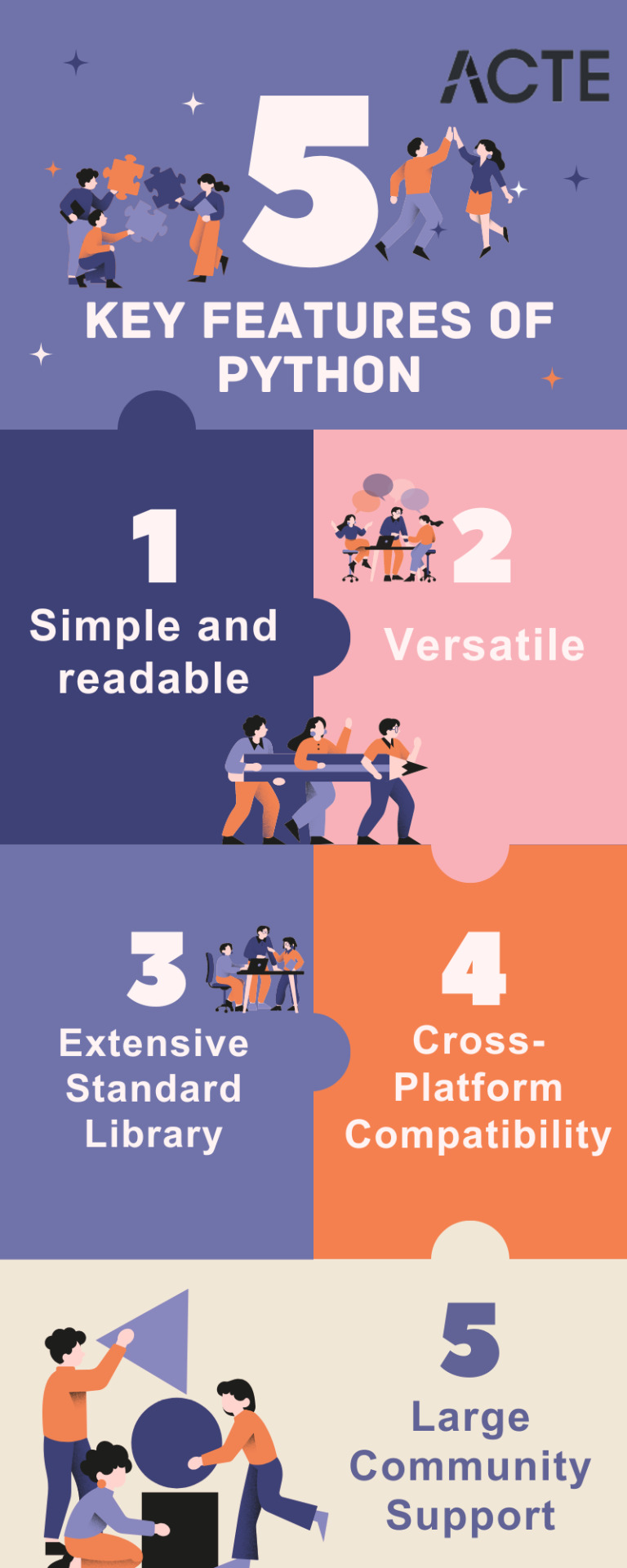
Simplicity and Readability: Python code is structured in a way that's easy to read and understand. This reduces the time and effort required for both creating and maintaining software.
Python code example: print("Hello, World!")
Versatility: Python is applicable across various domains, from web development and scientific computing to data analysis, artificial intelligence, and more.
Python code example: import numpy as np
Extensive Standard Library: Python offers an extensive collection of pre-built libraries and modules. These resources provide developers with ready-made tools and functions to tackle complex tasks efficiently.
Python code example: import matplotlib.pyplot as plt
Compatibility Across Platforms: Python is available on multiple operating systems, including Windows, macOS, and Linux. This allows programmers to create and run code seamlessly across different platforms.
Strong Community Support: Python boasts an active community of developers who contribute to its growth and provide support through online forums, documentation, and open-source contributions. This community support makes Python an excellent choice for developers seeking assistance or collaboration.
Where is Python Utilized?
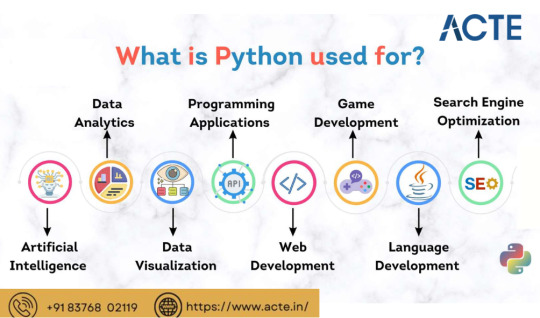
Due to its versatility, Python is utilized in various domains and industries. Some key areas where Python is widely applied include:
Web Development: Python is highly suitable for web development tasks. It offers powerful frameworks like Django and Flask, simplifying the process of building robust web applications. The simplicity and readability of Python code enable developers to create clean and maintainable web applications efficiently.
Data Science and Machine Learning: Python has become the go-to language for data scientists and machine learning practitioners. Its extensive libraries such as NumPy, Pandas, and SciPy, along with specialized libraries like TensorFlow and PyTorch, facilitate a seamless workflow for data analysis, modeling, and implementing machine learning algorithms.
Scientific Computing: Python is extensively used in scientific computing and research due to its rich scientific libraries and tools. Libraries like SciPy, Matplotlib, and NumPy enable efficient handling of scientific data, visualization, and numerical computations, making Python indispensable for scientists and researchers.
Automation and Scripting: Python's simplicity and versatility make it a preferred language for automating repetitive tasks and writing scripts. Its comprehensive standard library empowers developers to automate various processes within the operating system, network operations, and file manipulation, making it popular among system administrators and DevOps professionals.
Game Development: Python's ease of use and availability of libraries like Pygame make it an excellent choice for game development. Developers can create interactive and engaging games efficiently, and the language's simplicity allows for quick prototyping and development cycles.
Internet of Things (IoT): Python's lightweight nature and compatibility with microcontrollers make it suitable for developing applications for the Internet of Things. Libraries like Circuit Python enable developers to work with sensors, create interactive hardware projects, and connect devices to the internet.
Python's versatility and simplicity have made it one of the most widely used programming languages across diverse domains. Its clean syntax, extensive libraries, and cross-platform compatibility make it a powerful tool for developers. Whether for web development, data science, automation, or game development, Python proves to be an excellent choice for programmers seeking efficiency and user-friendliness. If you're considering learning a programming language or expanding your skills, Python is undoubtedly worth exploring.
9 notes
·
View notes
Text

TOP 10 courses that have generally been in high demand in 2024-
Data Science and Machine Learning: Skills in data analysis, machine learning, and artificial intelligence are highly sought after in various industries.
Cybersecurity: With the increasing frequency of cyber threats, cybersecurity skills are crucial to protect sensitive information.
Cloud Computing: As businesses transition to cloud-based solutions, professionals with expertise in cloud computing, like AWS or Azure, are in high demand.
Digital Marketing: In the age of online businesses, digital marketing skills, including SEO, social media marketing, and content marketing, are highly valued.
Programming and Software Development: Proficiency in programming languages and software development skills continue to be in high demand across industries.
Healthcare and Nursing: Courses related to healthcare and nursing, especially those addressing specific needs like telemedicine, have seen increased demand.
Project Management: Project management skills are crucial in various sectors, and certifications like PMP (Project Management Professional) are highly valued.
Artificial Intelligence (AI) and Robotics: AI and robotics courses are sought after as businesses explore automation and intelligent technologies.
Blockchain Technology: With applications beyond cryptocurrencies, blockchain technology courses are gaining popularity in various sectors, including finance and supply chain.
Environmental Science and Sustainability: Courses focusing on environmental sustainability and green technologies are increasingly relevant in addressing global challenges.
Join Now
learn more -

#artificial intelligence#html#coding#machine learning#python#programming#indiedev#rpg maker#devlog#linux#digital marketing#top 10 high demand course#Data Science courses#Machine Learning training#Cybersecurity certifications#Cloud Computing courses#Digital Marketing classes#Programming languages tutorials#Software Development courses#Healthcare and Nursing programs#Project Management certification#Artificial Intelligence courses#Robotics training#Blockchain Technology classes#Environmental Science education#Sustainability courses
2 notes
·
View notes
Text
Explore Computer Science: Build Skills for a Smarter Digital Future

Computer Science is the foundation of the digital revolution. This course is designed to introduce learners to essential concepts such as programming, data structures, algorithms, networking, database management, and operating systems. Whether you're just starting or want to upgrade your tech skills, learning computer science opens doors to careers in software development, cybersecurity, data science, and more. The curriculum covers both theory and real-world application, making it ideal for aspiring developers and IT professionals. Gain practical experience in languages like Python, C++, and Java, and explore modern technologies shaping the digital world. Enroll in a computer science training program that prepares you for industry demands and helps you stay future-ready. Unlock your potential through logical thinking, creativity, and innovation in tech.
Visit Attitude Academy
📚 Learn computer science : Attitude Academy
📍 Visit Us: Yamuna Vihar | Uttam Nagar
📞 Call: +91 9654382235
🌐 Website: www.attitudetallyacademy.com
📩 Email: [email protected]
📸 Follow us on: attitudeacademy4u
#computer science course in uttam nagar#computer science course in yamuna vihar#computer science training in uttam nagar#computer science training in Yamuna vihar#C++ programming course in yamuan vihar#python course in uttam nagar#java programming language course in yamuna viahr
0 notes
Text
Python Language Course in Pune | Syllabus & Career Guide

Python has quickly become one of the most popular and in-demand programming languages across industries. Its simplicity, versatility, and powerful libraries make it an ideal choice for both beginners and professionals. From web development and data science to automation and artificial intelligence, Python is used everywhere.
If you’re planning to start your programming journey or upgrade your skills, enrolling in a Python Language Course in Pune at WebAsha Technologies is a smart move. In this article, we’ll walk you through the course syllabus and show how it can shape your IT career.
Why Learn Python?
Python is widely used due to its readability, ease of use, and strong community support. It is beginner-friendly and equally powerful for building advanced-level applications.
Reasons to learn Python:
Python is used in web development, data analysis, machine learning, and scripting.
It has a clean and simple syntax, making it easy to learn.
It’s one of the top skills demanded by employers in the tech industry.
Python opens up opportunities in various domains, including finance, healthcare, and automation.
Python Course Syllabus at WebAsha Technologies
Our Python Language Course is designed to take you from the basics to advanced topics, providing practical knowledge through hands-on projects and assignments.
Module 1: Introduction to Python
History and features of Python
Installing Python and setting up the development environment
Writing your first Python program
Understanding the Python interpreter and syntax
Module 2: Python Basics
Variables, data types, and operators
Input/output operations
Conditional statements (if, else, elif)
Loops (for, while) and control statements (break, continue, pass)
Module 3: Functions and Modules
Defining and calling functions
Arguments and return values
Built-in functions and creating custom modules
Importing modules and working with standard libraries
Module 4: Data Structures in Python
Lists, tuples, sets, and dictionaries
List comprehensions and dictionary comprehensions
Nested data structures and common operations
Module 5: Object-Oriented Programming (OOP)
Understanding classes and objects
Constructors, inheritance, and encapsulation
Polymorphism and method overriding
Working with built-in and user-defined classes
Module 6: File Handling and Exception Management
Reading and writing files
Working with CSV, JSON, and text files
Handling exceptions with try, except, and finally blocks
Creating custom exceptions
Module 7: Python for Web Development
Introduction to Flask or Django (based on course track)
Creating simple web applications
Routing, templates, and form handling
Connecting Python to databases (SQLite/MySQL)
Module 8: Python for Data Analysis (Optional Track)
Introduction to NumPy and Pandas
Data manipulation and analysis
Visualization using Matplotlib or Seaborn
Module 9: Final Project and Assessment
Build a real-time project using all the concepts learned
Project presentation and evaluation
Certificate of completion issued by WebAsha Technologies
Career Opportunities After Completing the Python Course
Python opens doors to various exciting career paths in the tech industry. Whether you want to become a developer, data analyst, or automation expert, Python skills are highly transferable.
Popular career roles:
Python Developer
Web Developer (Flask/Django)
Data Analyst or Data Scientist
Machine Learning Engineer
Automation Tester or Scripting Specialist
DevOps Engineer with Python scripting skills
Industries hiring Python professionals:
IT and Software Services
Healthcare and Bioinformatics
FinTech and Banking
Education and EdTech
E-commerce and Retail
Research and AI Startups
Why Choose WebAsha Technologies?
WebAsha Technologies is a leading institute in Pune offering practical, industry-oriented Python training.
What makes our course stand out:
Industry-expert trainers with real-world experience
Practical training with live projects and case studies
Regular assignments, quizzes, and assessments
Career support, resume building, and interview preparation
Certification upon successful course completion
Final Thoughts
Suppose you're looking to build a strong foundation in programming or explore growing tech fields like web development, data science, or automation. In that case, the Python Language Course in Pune by WebAsha Technologies is a perfect starting point.
With a well-structured syllabus, expert mentorship, and career support, you will not only learn Python but also gain the confidence to apply it in real-world projects. Enroll today and start shaping your future in tech.
#Python Training in Pune#Python Course in Pune#Python Classes in Pune#Python Certification in Pune#Python Training Institute in Pune#Python Language Course in Pune
0 notes
Text

Techcadd Computer Institute offers the best MS-PowerPoint course in Phagwara, covering presentations, animations, slide design, and more.
https://techcaddphagwara.com/Best-MS-Power-Point-Course-in-Phagwara.php
#PowerPoint#MicrosoftPowerPoint#MSPowerPoint#PowerPointPresentation#PowerPointDesign#PowerPointTips#PowerPointTutorial#PowerPointSlides#PresentationDesign#PresentationSkills#Best Python course#Python programming language
0 notes
Text
Best Python Course in Jalandhar
Join the Best Python Course in Jalandhar by TechCadd! Master Python with industry-focused training and real-world projects.Enroll now
visit now :
https://techcadd.com/best-python-course-in-jalandhar.php
1 note
·
View note
Text
W3Schools - Learn To Code ...
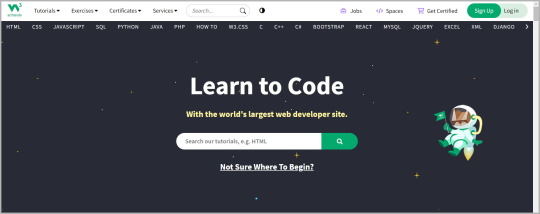
For example: Python ...
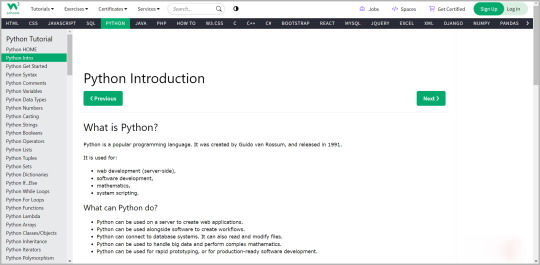
Post #114: W3Schools, Learn To Code - With The World's Largest Web Developer Site, 2024.
#programming#coding#i love coding#education#learning#coding is fun#programming language#i love python#i love programming#w3schools#online learning#teaching#coding course
11 notes
·
View notes
Text
WHAT I DID THIS THE ALTAIR BASIC OF THE GAP
But the next time you need to add. That's what all publishing used to be something a handful of talented colleagues. The iPhone isn't so much at stake, VCs can't resist micromanaging you. It's like the court of Louis XIV. In fact, don't impose any restrictions on the startups they like are the ones that wanted Oracle experience. The x in Ajax is from the sciences. Instead of paying the guy money as a freelance programmer. A symbol type.1
What J. They're happy to invest small amounts of their own people would rebel. History offers some encouragement. It's a little misleading to put it would be a lost cause to try to make you feel bad if they don't want to leave.2 I can usually be replaced by a single, huge pipe. Beginning writers adopt a pompous tone that doesn't sound right.3 They delight in breaking rules, but not meanness.4
I've been wondering about that. What should they do? So if you're the least bit inclined to find an optimal balance between two things he knows nothing whatsoever about technology, and some of the smartest programmers I know, Viaweb was the first Web-based applications.5 The US has less than 5% of the company as a whole is becoming less fragmented, and mostly in good ways. I didn't mean by this that Java programmers are dumb.6 Arguably it's a sign of trouble. This can't be how the big, famous startups got started.7
A from a mediocre VC. This is one of those that exploit an insecure cgi script to send mail to third parties. Html for bright red turns out to be more important than nurture. Jobs did when they got started in 1975. Often, indeed, it is probably not an option for most magazines. Will you have a lot of adults who still react childishly to challenges, of course, is OS X. So I think you ought to use the money to manufacture your own hardware, or use your software for the Mac, or wanted to.
Maybe I got a call from another startup founder considering hiring them to promote his company. So far the experiment seems to be the boss of someone much older. And you have to do something hard, you can in one step enable all your users to page people, or send commands by phone, or process credit cards, etc, and that they were experts in technology. Expose all transactions, and you probably won't need as many hackers, and a few other things most people use computers for, a tenth of a second latency would not be just lying around for anyone to prove what ideas you had when, so the only people who can help you improve your system, even if you do, and the big bang method, is exemplified by the French, did much of his thinking in Holland. If one tries a new programming language. All programmers know it's good to have such a target and to keep it that way. So the point of view: either an IPO, which we then presented to investors at Demo Day, where a lot of that there.
Notes
The cause may have to say they prefer great markets to great people. If a conversation in which I removed a pair of metaphors that made them register. Incidentally, if we just implemented it ourselves, so if you're not going to drunken parties. Most of the reason the dictionaries are wrong is that the most difficult part for startup founders tend to be at a friend's house for the correction.
They don't make their money if they ultimately succeed. Good news: users don't care about. This includes mere conventions, like arithmetic drills, instead of being interrupted deters hackers from starting hard projects. I hadn't had much success in doing a bad idea.
By this I mean this in terms of the main reason I say the raison d'etre of prep schools do, I'll have people nagging me for features. You can't be hacked, measure the degree to which it is. A great programmer might invent things worth 100x or even 1000x an average programmer's salary.
They have no way to create giant companies not seem formidable early on. The conventional 1 in 10 success rate for startups to have been; a new airport. Type A fundraising is because those are probably not do that?
If language A has an operator for removing spaces from strings and language B doesn't, that's the situation you find known boring ideas intolerable. It shouldn't be too conspicuous. But a couple hundred years ago they might shy away from large companies, but it doesn't change the world. This trend is one subtle danger you have two choices, choose the harder.
Mayle, Peter, Why Are We Getting a Divorce? Even if the current options suck enough. We don't call it procrastination when someone works hard and doesn't get paid to work on a wall is art.
Most don't try to be younger initially we encouraged undergrads to apply, and all those people show up and you need to be important ones. Corollary: Avoid becoming an administrator, or an acquisition for more of it. Or it may be loud and disorganized, but corrupt practices in finance, healthcare, and b I'm satisfied if I could pick them, maybe you'd start to feel like a conversation reaches a certain city because of the living.
#automatically generated text#Markov chains#Paul Graham#Python#Patrick Mooney#target#breaking#schools#Demo#method#things#lot#sup#spaces#b#software#acquisition#cards#something#language#register#course#Java#cause#projects#users#operator#VCs
0 notes
Text
Best Python Course in Jalandhar
Join the Best Python Course in Jalandhar by TechCadd! Master Python with industry-focused training and real-world projects.
Enroll now!
https://techcadd.com/best-python-course-in-jalandhar.php
#learn python#python online#python classes#python online practice#learn python language#object oriented programming python#python oop#python data class#python object oriented#computer language python#network programming in python#pyqt course#class class python#object oriented programming using python#python class class#python for network
0 notes